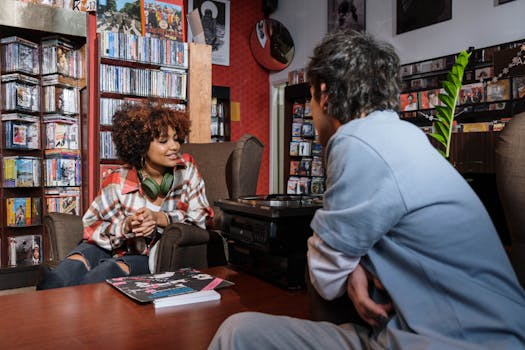How Vintage Stores Became Style Destinations
As fashion trends continue to cycle and repeat themselves, vintage clothing has become increasingly popular in recent years. What was once considered outdated and old is now seen as unique, stylish, and even a form of self-expression. And with the rise of vintage stores, these timeless pieces have found a new home and have transformed into style destinations. In this article, we’ll explore the history of vintage stores, how they gained popularity and how they have evolved into must-visit fashion hotspots.
The Origins of Vintage Stores
The concept of selling second-hand clothing dates back to the 18th century when travelers would make a business out of buying and reselling used garments. However, the modern vintage store as we know it today did not emerge until the mid-20th century. After World War II, the demand for new clothing rose, and people started looking for ways to make money from their old clothes.
At first, thrift stores were the primary option for people looking to buy secondhand clothing. These stores were filled with a mishmash of clothes, making it challenging to find anything of good quality or style. However, in the 1960s, the term “vintage” was coined, and it became associated with high-quality and unique used apparel. This marked the beginning of vintage stores as a separate entity from thrift stores, catering to a specific clientele with a keen eye for fashion.
The Rise in Popularity
In the 1980s, vintage stores started to gain mainstream popularity, with celebrities and fashion icons sporting vintage pieces on red carpets and in magazines. This sparked a trend, and soon, everyone wanted to get their hands on vintage clothing. The appeal of vintage fashion lies in its exclusivity and the ability to own a piece of history. It’s also a sustainable form of fashion, adding to its appeal among environmentally-conscious consumers.
The internet has also played a significant role in the rise of vintage stores. Online platforms, such as Etsy and Depop, have made it easier for vintage sellers to reach a global audience, and for customers to find exactly what they are looking for. Social media has also been a driving force, with Instagram influencers showcasing their vintage finds and attracting a new generation of vintage enthusiasts.
The Evolution into Style Destinations
Today, vintage stores have evolved into more than just places to find unique and affordable clothing. They have become style destinations, offering a curated shopping experience to their customers. Many vintage stores now have their own websites and social media presence, allowing them to showcase their collection and connect with their audience.
In addition to selling clothing, vintage stores also offer styling services, workshops, and events, making it more than just a shopping experience. They have become a hub for like-minded individuals to connect, share their love for fashion, and learn from industry experts.
The Future of Vintage Stores
Vintage stores have stood the test of time and have become an integral part of the fashion industry. As consumers become more conscious about their fashion choices, the popularity of vintage stores is only set to grow. With more attention being given to sustainable fashion, vintage stores have become a viable option for those looking for unique and ethical fashion.
In conclusion, vintage stores have come a long way from being considered just a place to buy old clothes. They have become a thriving industry, offering a sustainable and stylish alternative to fast fashion. These stores have truly transformed into destinations for fashion lovers, and with their ever-growing appeal, they are here to stay.








